Love them or hate them, the cover letter isn’t going anywhere in 2024. While the job application process might be going increasingly digital and you might be able to apply for some roles with a single click, the cover letter is still popular with many employers.
The cover letter will accompany your CV and fill in the gaps for the prospective employer. It’s a way to introduce yourself, state why you are interested in the role and why you would be a perfect fit. It’s certainly possible to overthink the cover letter, but we’re going to share some tips on how to streamline the process for success.
When you have a surefire system in place for quickly generating winning cover letters, you can apply for jobs with confidence. Many people stress about the role of the cover letter and actually delay applying for jobs until the cover letter is completely perfect. If this sounds like you, read on to learn our top tips for crafting the perfect cover letter in 2024, including some examples.
What is a cover letter for?
The cover letter is hated by many job applicants because it takes time and effort to put it together, but this is often why employers request this additional step.
A cover letter needs to be personalised to a role and it will be very obvious if you are sending out a generic cover letter. In this way, employers can protect themselves against candidates that aren’t serious about the role by ruling out those who have not bothered to put together a compelling cover letter.
Before email, cover letters would be sent in a physical envelope alongside a printed CV. The cover letter therefore helped to direct the letter to the right place, otherwise it would just be a generic CV landing in the post room of a company, and it would not be obvious that it was an application for a role.
Today, the cover letter doesn’t have to be printed and you don’t have to shell out for a stamp. The cover letter is placed in the body of the email and introduces the candidate and their CV. It can also draw attention to key points and help to join the dots between points included on your CV.
In short, your cover letter is your elevator pitch. It is a chance to highlight your key attributes and convince the hiring manager to take a closer look at your CV, and to invite you for an interview.
What should you include in a cover letter?
Every cover letter should be unique to the job you are applying for. While you might be able to copy and paste certain sections of the cover letter, you need to make sure you include information relevant to the role to ensure your cover letter stands out.
Before sending a cover letter and CV, check that you have included the following information:
An appropriate greeting, directed at the hiring manager. If you can use a name in your cover letter, this will demonstrate excellent attention to detail.
The title of the role you are applying for.
A brief overview of why you think you would be a good fit for the role.
Key aspects of your education and experience that would make you a good fit for the role.
A call to action for the employer.
What should you leave out of your cover letter?
When crafting your cover letter, you want to make sure that you are specific about the role. If you are too vague, you risk the employer assuming that you have simply copied and pasted the cover letter to hundreds of employers.
In addition to vague details, you should also avoid talking about salary expectations or start dates just yet. These are all helpful bits of information to include, but it might be seen as soon early in the process to start talking about the finer details. The exception would be if the employer asks you to include this information.
You also don’t need to include information about your age, marital status or sexual orientation in your cover letter or anywhere else on your application. You also don’t need to include a photograph.
How to write a cover letter
Your cover letter should be prepared alongside your CV to give you the best possible chance of securing an interview. You should also refer closely to the job description to make sure you hit all of the required points. When constructing your cover letter, try the following steps:
Customise the introduction to your cover letter based on the job role. This means mentioning the job title and where you saw the role advertised. If you have been referred by another employee, now is the perfect time to name drop.
Next, refer to the job description to provide specific examples of how you meet the job requirements. Start with an overview of your current role and how this experience would assist you in the new role. You can then delve into key points in your education and work history to strengthen your application.
Make sure you keep your cover letter short and to the point. If you find yourself rambling about information that isn’t included in your CV, then it might be time to revisit how your CV is written as you are clearly missing out key information.
Proofread once and then proofread again. Nothing will make employers think that you have rushed your application or have poor attention to detail than spelling errors in your cover letter. Use software like Grammarly to check your cover letter, or ask a trusted friend or family member to proofread the letter for you.
Examples of cover letters
Cover letter 1
A cover letter for a marketing manager role with a large supermarket chain. The job description requests the candidate has experience in the following key areas:
Leadership
Graphic design and video production
GA4
Creativity and copywriting
Dear [Hiring Manager's Name],
I am writing to express my interest in the Marketing Manager position at [Company Name]. With a proven track record of leadership, expertise in graphic design and video production, proficiency in GA4 analytics, and a passion for creativity and copywriting, I am confident in my ability to contribute effectively to your team and drive impactful marketing campaigns for [Supermarket Chain Name].
Throughout my career, I have cultivated a strong leadership style characterised by collaboration, mentorship, and a results-driven approach. In my previous roles, I successfully led cross-functional teams, fostering a culture of innovation and accountability to achieve organisational goals. I believe that effective leadership is about empowering team members, leveraging their strengths, and fostering an environment where creativity thrives.
My proficiency in graphic design and video production has been instrumental in developing compelling visual content that resonates with target audiences. I have a keen eye for design aesthetics and a thorough understanding of visual storytelling techniques, allowing me to create engaging marketing materials across various platforms.
Furthermore, I am well-versed in GA4 analytics and adept at leveraging data insights to optimise marketing strategies and drive informed decision-making. By analysing key metrics and consumer behaviour patterns, I can identify opportunities for improvement and tailor marketing initiatives to maximise ROI effectively.
I am particularly excited about the opportunity to join [Supermarket Chain Name] and contribute to the continued success of your marketing efforts. With my diverse skill set, leadership experience, and passion for driving results, I am confident that I can make a significant impact on your team and help elevate your brand in the highly competitive retail landscape.
Thank you for considering my application. I am eager to discuss how my background, skills, and enthusiasm align with the needs of [Supermarket Chain Name].
Warm regards,
[Your Name]
Cover letter 2
A cover letter for a business development role with an events agency. The role asks for the following specific competencies:
Outgoing and confident personality
Experience in a fast-paced sales environment
Motivated self-starter
Dear [Hiring Manager’s Name],
I am writing to apply for the business development role I saw advertised on your website. Please find attached my CV and details of references.
In my current role as sales manager for [Company Name], I am responsible for a small sales team tasked with driving revenue growth and expanding our client base. Leading this team has allowed me to hone my skills in sales strategy development, relationship management, and business expansion. I have consistently exceeded sales targets and cultivated strong partnerships with key clients, contributing to the overall success and growth of the organisation.
My experience has equipped me with the ability to identify new business opportunities, negotiate favourable terms, and develop tailored solutions to meet client needs effectively. I am adept at conducting market research, analysing trends, and identifying emerging opportunities for growth. Moreover, my outgoing and confident demeanour has enabled me to establish rapport with clients and stakeholders, facilitating productive collaborations and driving business development efforts forward.
I am particularly excited about the opportunity to bring my skills and experience to [Events Agency Name] and contribute to the continued success of your business development initiatives. I am confident that my proven track record of success, coupled with my passion for driving results, make me a strong candidate for this role.
Thank you for considering my application. I am enthusiastic about the possibility of joining your team and am available for an interview at your earliest convenience. Please feel free to contact me at [Your Phone Number] or via email at [Your Email Address].
Warm regards,
[Your Name]


